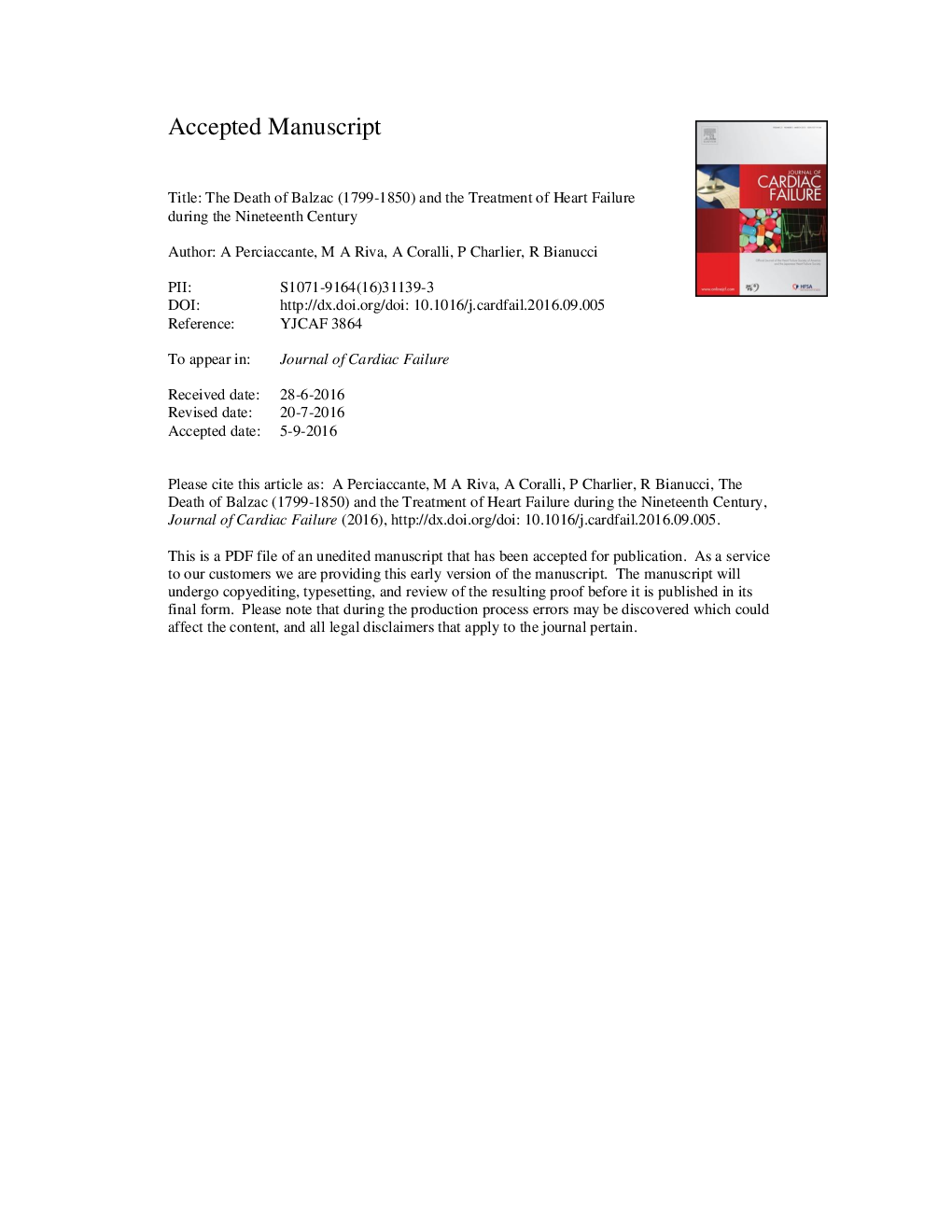| Article ID | Journal | Published Year | Pages | File Type |
|---|---|---|---|---|
| 5614147 | Journal of Cardiac Failure | 2016 | 12 Pages |
Abstract
Overweight, workaholic, and a caffeine abuser, Honoré de Balzac lived a life of excess. He prematurely died at the age of 51 owing to gangrene associated with congestive heart failure. Textual sources allow us to take a glimpse into his last 3 months of life. Because of ventricular hypertrophy, Balzac's respiratory conditions were appalling and he developed severe leg edemas and possibly stasis dermatitis. Here we report on Balzac's demise and provide first evidence of a pioneering medical treatment applied to save his life: the use of a trocar to drain leg edema. Based on the empirical observation of the benefits derived from an accidental leg drainage, Balzac's physicians anticipated the invention of the “Southey tube”, whose use evolved in the following century to treat obstinate edema in heart failure patients. Unfortunately, following the daily maneuvers for trocar insertion and in the absence of adequate disinfection measures and antibiotics, bacteria infected the open wound and gave rise to the gangrene, which caused the writer to die within 24 hours of its onset.
Keywords
Related Topics
Health Sciences
Medicine and Dentistry
Cardiology and Cardiovascular Medicine
Authors
A. MD, M.A. MD, PhD, A. BS, P. MD, PhD, R. PhD,
